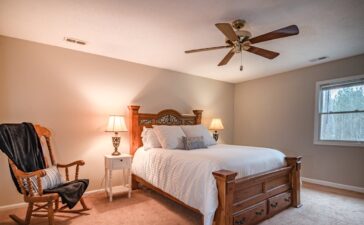When it comes to choosing the right door hinges for your home or business, there is no one size fits all solution. The type of hinge you use will depend on the specific needs of your property, as well as the door’s weight and size. One type of hinge that has been gaining in popularity in recent years is the continuous hinge. A continuous hinge is a long length of hardware that provides a seamless connection between two door jambs and can be used for both inward and outward swinging doors. In this blog post, we will provide an overview of what you need to know about continuous door hinges so you can decide if they are the best option for your property.
What are continuous door hinges?
Continuous door hinges are a type of door hinge that is designed to provide support for a door over its entire length. This makes them ideal for use on heavy doors or doors that are subject to high levels of wear and tear. Continuous door hinges are also known as full-surface hinges or full-wrap hinges.

There are a few different types of continuous door hinge available on the market, but the most common type is the butt hinge. Butt hinges have two leaves that are connected by a pin, and they’re installed by fastening the leaves to the door and frame using screws. Another type of continuous door hinge is the strap hinge, which consists of a single strip of metal that is wrapped around the door and frame. Strap hinges are generally used on lighter doors, such as cabinet doors.
Installing continuous door hinges is generally a straightforward process, but it’s always best to consult with a professional if you’re unsure about anything.
The pros of continuous door hinges
Continuous door hinges, also known as piano hinges, are a type of hinge typically used on doors that are 90 inches or longer. They offer a clean, seamless look and can support a lot of weight. However, they’re not without their drawbacks. Here’s a closer look at the pros and cons of continuous door hinges:
PROS:
– Aesthetically pleasing: Continuous door hinges offer a sleek, streamlined look that can complement any aesthetic.
– Durable: These hinges are designed to support heavy doors, so they’re built to last.
– Easy to install: Unlike some other types of hinges, continuous door hinges are relatively easy to install. You won’t need any special tools or skills to get the job done.
How to install continuous door hinges
If you’re looking for a way to make your doors more durable and long-lasting, then you may want to consider installing continuous door hinges. Continuous door hinges are v to provide extra support to doors that receive a lot of use, such as those in high-traffic areas. While they are more expensive than standard door hinges, they will save you money in the long run by extending the life of your doors.
Here’s everything you need to know about how to install continuous door hinges:
1. Purchase the right size hinge for your door. Continuous door hinges come in a variety of sizes, so it’s important to measure your door before making a purchase.
2. Remove the old hinges from your door. This is typically a simple process that can be done with a screwdriver.
3. Install the new continuous door hinges. First, line up the holes on the hinge with the corresponding holes on the door frame. Then, use screws or nails to secure the hinge in place. Make sure that the hinge is level before moving on to the next one.
4. Hang your door and test it out! Once all of the hinges are installed, you can hang your door and make sure that it opens and closes smoothly.
Tips for choosing the right continuous door hinges for your door
When it comes to choosing the right continuous door hinges for your door, there are a few things you need to keep in mind. First, you need to make sure that the hinges you choose are the correct size for your door. Second, you need to make sure that the hinges you choose can support the weight of your door. Third, you need to make sure that the hinges you choose are durable and will last for a long time. Here are a few tips to help you choose the right continuous door hinges for your door:
1. Make sure that the hinges you choose are the correct size for your door. Continuous door hinges come in a variety of sizes, so it is important to choose the right size for your door. If you have a standard sized door, then you should be able to find continuous door hinges that will fit it perfectly. However, if you have an unusually sized door, then you may need to special order continuous door hinges.

2. Make sure that the hinges you choose can support the weight of your door. Continuous door hinges are designed to support very heavy doors, so if your door is particularly heavy, then you will want to make sure that the hinges you choose can support its weight.
3. Make sure that the hinges you choose are durable and will last for a long time. When it comes to durability, nothing beats stainless steel continuous door hinges. Stainless steel is incredibly strong and resistant to rust and corrosion. Pick up a set of continuous door hinges via HomeBuilders Hardware website. Where you can find the best for all your needs.
How to troubleshoot common problems with continuous door hinges
If your continuous door hinges are giving you trouble, there are a few things you can do to try and troubleshoot the problem. First, check to see if the hinges are properly installed. If they are not, it is possible that they are not aligned correctly or that the screws are not tight enough.
Another common problem with continuous door hinges is that the door may not be level. This can be fixed by adjusting the hinge installation so that the door is level when closed.
If your hinges still seem to be causing problems, it is possible that they need to be lubricated. You can use a silicone-based lubricant on the pins and bushings of the hinges to help reduce friction and make them operate more smoothly.
Finally, if none of these troubleshooting tips solve your problem, you may need to replace your continuous door hinges.





